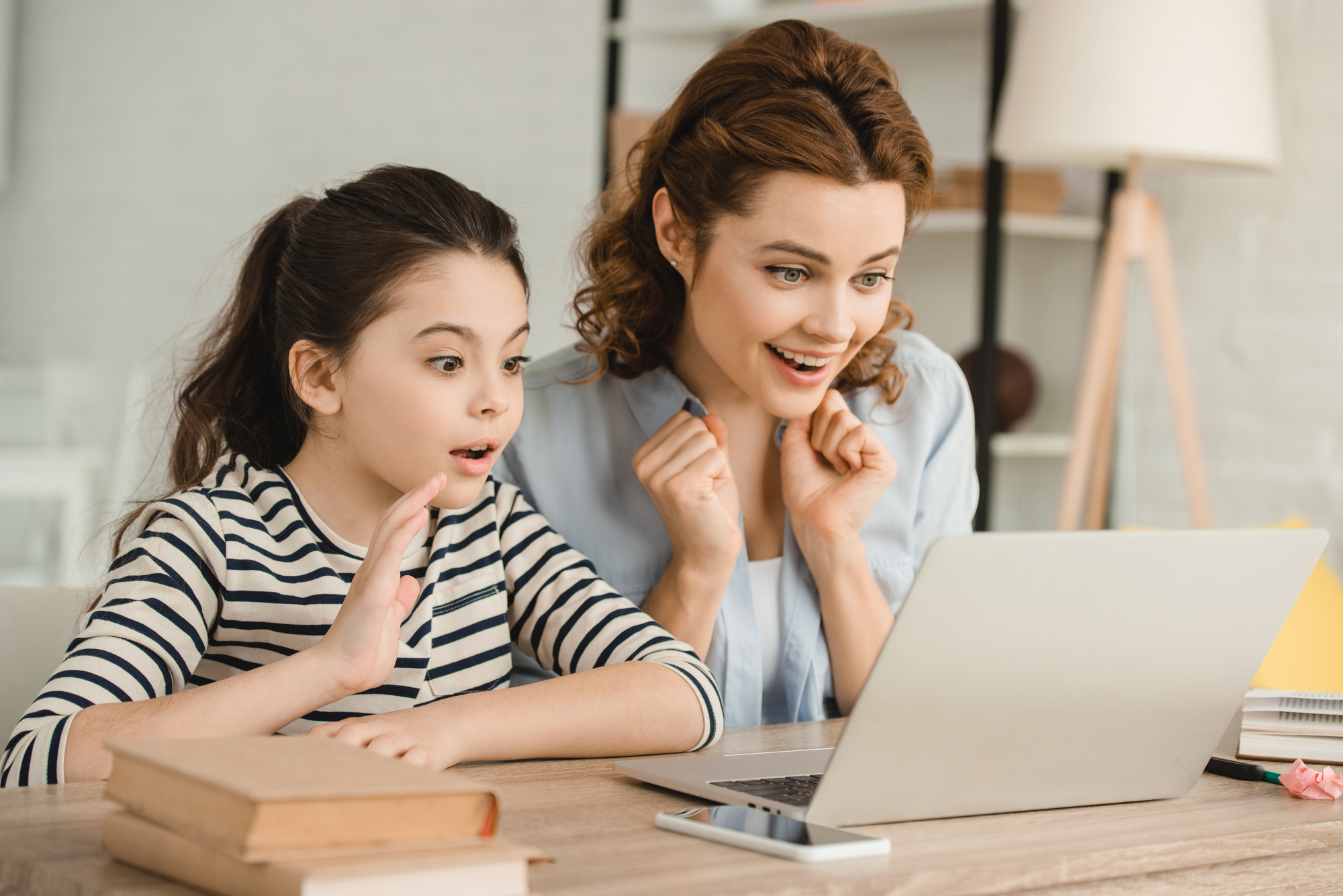
Are you faced with the challenge of setting up a classroom at home? Many people, teachers and parents, are facing the real possibility that the school year is done, and our children will not return to their formal classrooms until the fall. If until now any of us thought that this unfathomable situation was going to be short term, it is now clear that it won’t be. Some of us may have been early adopters to the new normal; others may have been slower to accept it. But the reality is our kids are home for the next few months and they will be learning from home. If until now your children have been learning at the kitchen or dining room table, it’s time to consider setting them up in a better environment which will simulate many of the benefits of professionally designed classrooms.
Nothing can replace the socializing kids do in school, nor the face-to-face interactions with peers and teachers. But there are many aspects of the physical classroom that are simply taken for granted. They are the result of years of progress in the field of child psychology and education, and if they can be affordably replicated in a home learning environment, it behooves us as parents to try. Below are some simple tips for setting up the home learning space. There are also some creative products that are quite affordable. Besides adding some freshness to the environment, having these home learning resources will create a more serious attitude to an otherwise casual atmosphere.
We already know what the ideal classroom should look like. Let’s try to take some of those elements and bring them home.
Classroom layout has been evolving rapidly in the last few years, after hundreds of years with little change. The move to more flexible, collaborative learning and away from fixed-in-place lecture learning has been well documented. Kids need their space and need flexibility. Your home learning space will likely not need 25-35 desks (unless you have a lot of kids!), but it is still important to make sure your child or children do not feel cramped or crowded. Ensure that you are not shoving them into a small space or corner. If you are going to be spending time with your child/student, give them the personal space they need. Every child is different, so you will need to know what each child prefers.
They should have room to spread their arms and their legs, and not be surrounded by clutter. Clutter is distracting and takes away children’s attention.
If technology is going to be used, set up a proper work station. This means that the student will have the proper space to use a mouse and keyboard, and perhaps also a book or notebook at the same time. Wires are clutter - and therefore distracting. Try to keep them organized and/or hidden.
Unless the light makes working on a computer difficult, windows and blinds should be open. This is not just about lighting, but about a feeling of openness. It creates a positive feeling.
All aspects of the space should be considered for ergonomics. If you and your child will be sitting in the learning space for a long time, then all desks, chairs, monitors, computers, should be set at the proper heights.
As mentioned above, it would be optimal to set up a learning space at home in a room with windows, which should be kept open. Closed windows can be depressing and discourage imagination and creative thinking. Open windows are good for the mental wellbeing of both parent/child, teacher/student. Besides the psychological effect of windows being open, the actual natural lighting also adds plenty of mental health benefits. Try to find a room that will have plenty of natural lighting. Lighting at all times should be plentiful and comfortable, not too bright and not too dull, and free of any glare.

Color has a huge impact on mood and attitude. Much thought and science has been invested into choosing colors for not only schools and classrooms, but waiting rooms, medical facilities, and a huge variety of room purposes in institutions. Natural warm colors are best, followed by bright, bold or colorful colors.
While it may not be realistic to consider painting a room right now, consider the range of colors in your home and check if one room may be better suited to be the classroom area based on the color. Consider not just wall color but the colors of the furniture and the immediate surroundings. Is it possible to use that room for your home learning space?
In the classroom, children have a set schedule, and have a place set for everything. They know where to put their belongings (lockers, cubbies), where to look for daily scheduling information (online, bulletin boards), and where to find resources (reading area). At home, would your child know how to easily find the same information? The importance of trying to keep their routine as normal as possible cannot be overstated. In order to act like a teacher at home, even these “little things” from the classroom should be implemented. It will have a huge impact on the child’s ability and desire to take the learning seriously.
Much has been said about classroom seating in recent years. Your child may have been attending a school that has already adopted flexible seating arrangements. Either way, now is not the time to ask a child to sit in an uncomfortable chair or table combination for a few hours at a time. It will also not be effective to have the child learn while sitting on a comfortable couch (with a TV, or other distractions nearby), or on a bed.
The best seating options should be comfortable and easily moveable.
Optimally, you can provide a few options and allow the child to move or rotate between them.
Especially for younger children, seats should be colorful, made from sturdy, non-toxic plastic or other materials, and should not have sharp angles or rough edges.
See this collection for a great selection of active seating options, which would be perfect for any home learning space.
Kids, just like adults, love to personalize their space. Give them the option to do so in their new home learning space. Adding their names to chairs, desks, creating personal space for them on a bulletin board, or giving them their own classroom cubby will give them a sense of ownership and buy-in to the new space.
What happens when there is more than one child at home? Suddenly the challenge becomes even bigger, as different aged children will have different learning styles and needs. Instead of creating a classroom in your home, you may be faced with creating a school in your home! This can be a difficult challenge due to the space available in your home and your budget. One solution may be to get the older children involved in teaching the younger children, where and when possible. Not only will this save space but the young teacher will likely benefit and learn from the experience.
Hopefully, when we are all back in our school classrooms, we will look back at this time with a positive lens. After properly setting up our home learning space, and spending some special quality time with our children, we will have created some great memories and fantastic learning achievements for everybody involved.
